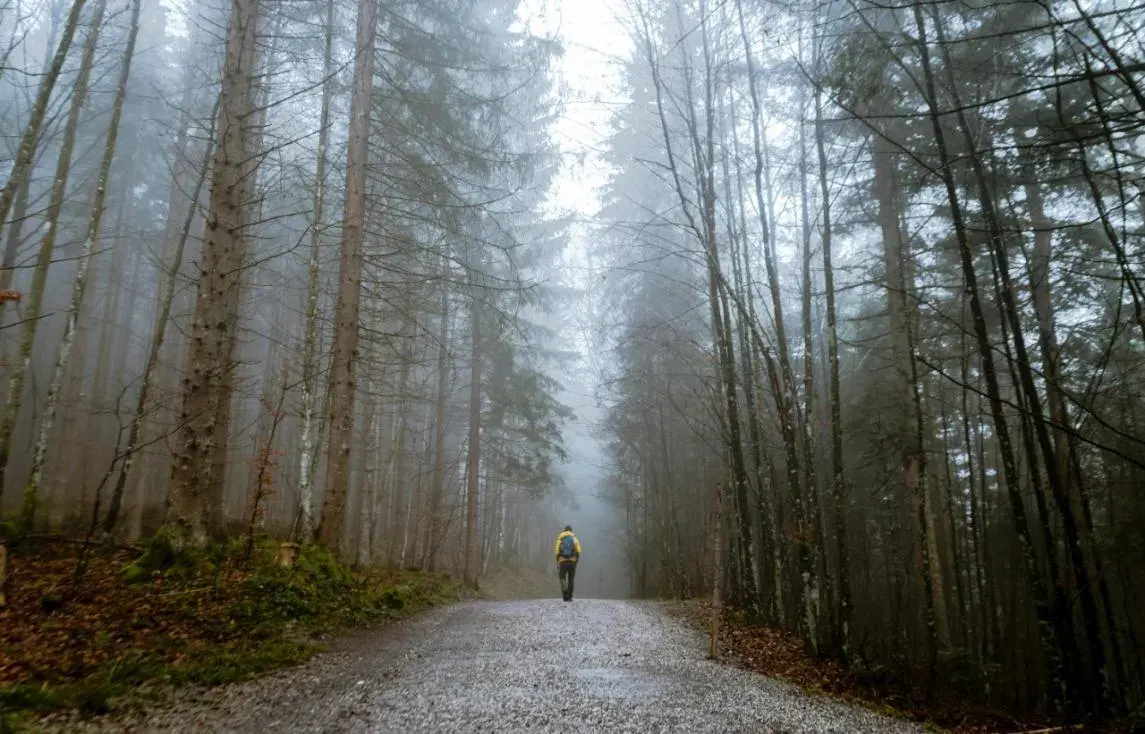
5 Reasons to Walk After 50 | Top Walking Tours
Admin
March 16, 2025
778 words
4 minutes
As we get older, maintaining a regular exercise routine becomes increasingly important for our health and general well-being. Exercising after 50 is not just about keeping fit, it’s also about improving quality of life, promoting longevity and ensuring healthy ageing. Among the many options for physical activity, walkingstands out as a versatile, enjoyable and highly beneficial choice. Whether you’re looking for cardiovascular benefits, mental clarity or simply a way to enjoy the outdoors, here are five reasons why hiking is one of the best activities for people over 50.
1. low impact exercise perfect for joint health
One of the main concerns for people over 50 is joint health. Unlike high-intensity exercises that can put a strain on the knees or hips, walking offers a low-impact exercise option that is gentle on the joints. The natural terrain absorbs shock, making it gentler on your body than running on sidewalk. For anyone concerned about arthritis or stiff joints, hiking is an excellent way to stay active without aggravating discomfort.
In addition, regular walking strengthens the muscles around the joints, improving stability and reducing the risk of injury. By making it part of your routine, you are investing in mobility and flexibility, ensuring that you remain agile as you get older.
2. Improves cardiovascular health after the age of 50
Heart health is a critical factor for anyone over 50 and hikingi s a fantastic way to improve cardiovascular fitness. Climbing hills or going over rough terrain increases your heart rate, promoting better blood circulation and strengthening your heart. As a moderate-intensity exercise, hiking fits in perfectly with the levels of physical activity recommended for older adults.
The beauty of hiking is its versatility - you can start with easier trails and gradually progress to more demanding routes. This progressive approach makes hiking an excellent activity for those who want to improve their cardiovascular health after 50 without excessive effort.
3. Supports mental health and emotional well-being
In addition to their physical benefits, hiking is a powerful tool for mental health. Spending time in nature reduces stress, improves mood and cognitive function. For people over 50, this is especially valuable, as mental health problems such as anxiety and depression can become more common with age.
Hiking also stimulates mindfulness. The rhythmic movement of walking, combined with the calming sights and sounds of nature, creates a meditative experience that promotes relaxation and mental clarity. In addition, walking in a group or with friends promotes social bonding, which is another critical aspect of emotional well-being in older years.
4. Promotes healthy ageing and physical longevity
Hiking involves a variety of movements - walking, balancing and sometimes climbing - involving several muscle groups. This makes it a comprehensive exercise that increases strength, balance and endurance. As one of the best physical activities for people over 50, walking helps to combat the natural decline in muscle mass and bone density associated with ageing.
Regular walking also improves your posture and coordination, reducing the likelihood of falls - a key concern for the elderly. When combined with a healthy diet and adequate hydration, it’s a recipe for healthy ageing with walks that keep you active and independent well into your golden years.
5. Accessible and adaptable to all fitness levels
Starting a new physical activity after the age of 50 can seem daunting, but hiking is one of the most accessible options available. There’s no need for expensive equipment or gym memberships; all you need is a pair of sturdy walking shoes and a good sense of adventure. Whether you’re an experienced outdoor enthusiast or just starting out in light physical activity for the elderly, hiking offers trails and terrain suitable for all levels of ability.
To begin with, focus on shorter, easier trails and gradually increase the length and difficulty of your hikes. If you’re wondering how to start hiking at 50, consider joining a local hiking group or looking for beginner trails in nearby parks. Many trails also have clear signage, which makes navigation easier.
Tips for safe and enjoyable walks after 50
To get the most out of your hiking experience, bear in mind the following hiking suggestions for people over 50:
1. invest in the right equipment: comfortable shoes with good grip and support are essential. Consider using trekking poles for greater stability.
2. Stay hydrated: Bring water and snacks to keep your energy levels up during the walk.
3. Know your limits: Start slowly and listen to your body. Rest whenever necessary, especially on difficult trails.
4. Check the weather: Avoid extreme heat or cold and dress in layers to adapt to changing conditions.
5. Bring a companion: Walking with a friend or a group not only increases safety but also makes the experience more enjoyable.
Conclusion
Exercising after 50 doesn’t have to be monotonous or too strenuous. Hiking provides the perfect mix of physical activity, mental relaxation and social interaction, making it the ideal choice for anyone looking for a healthier and happier lifestyle. Whether you’re interested in the benefits of hiking after 50 or simply exploring a new hobby, this versatile activity offers endless rewards.

